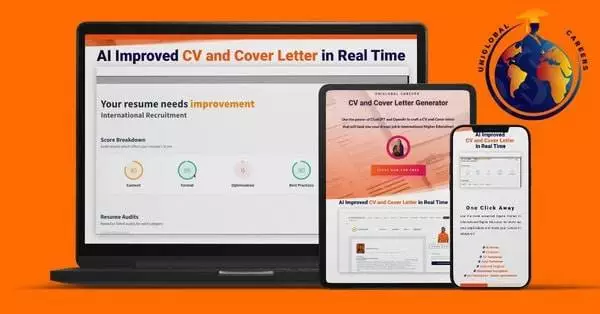[ad_1]

Daniel M Ernst/ Shutterstock
Are you about to give a hiring supervisor déjà vu by making use of for a job at an establishment that after rejected you? Maybe you are wanting to grow to be a “boomerang employee” by returning to a campus the place you beforehand labored. Either means, as a candidate who’s reapplying to an establishment, you’ve gotten a singular alternative to distinguish your self, despite the fact that your efforts may appear redundant or a formality, on condition that the employer already has your resume or CV on file.
“If you’re going to apply a second time, you need to be able to tell the story that something’s different,” mentioned Mark Coldren, affiliate vice chairman of human sources on the University at Buffalo. “You have to be able to say, ‘In the time since I’ve applied, here’s what I’ve learned…’ You can reference that you applied before, but explain why you are more ready now because of such and such, and then (employers) see that opening for you.”
The identical goes for boomerang candidates. In the years following the Great Resignation, when many professionals modified jobs, folks may need to return to their outdated job. If you need to return to your earlier campus, have a compelling story to clarify the way you grew in your time away and do not simply categorical remorse.
“We have seen a lot of people leave because they think the grass is greener,” Coldren mentioned. “That’s happened a couple of times, and I’ve told managers to be ready for that. People sometimes take a job and they leave for money or remote work, and then they realize this isn’t what they thought it would be and they want to go back.”
Employers are extra open to boomerang candidates than you may think. One survey showed that 86% of employers view boomerang candidates extra positively than others. And to entice higher candidates, employers are being advised to normalize resignations and develop alumni packages, not like the “alumni engagement” that we’re used to in larger training.
There’s no set period of time that wants to elapse earlier than reapplying to an establishment, and relying on the union settlement or institutional coverage, boomerang candidates may even have the ability to retain their service time if solely a short while has handed.
There are additionally variables to think about when reapplying should you have been beforehand rejected. Is it the identical place (which means the employed candidate already left)? Are they including extra school inside a division? Would a hiring supervisor suppose to contact you to see should you’re nonetheless in search of a job? Typically, you need to wait at the least a semester earlier than reapplying so you’ve gotten an opportunity to present that one thing modified.
In that case, you are in luck. A do-over may go in opposition to an employer’s sound judgment, pondering you may go away once more otherwise you weren’t the perfect match the primary time they evaluated you, however a narrative is extra highly effective than logic. In Will Storr’s ebook “The Science of Storytelling,” he cited examples from neuroscience about how folks simplify the chaotic world round them by means of narratives as a substitute of processing knowledge (or resumes and CVs). And the detection of change ignites folks’s perceptual methods. “Every story you’ll ever hear amounts to ‘something changed,'” Storr wrote. “Change is endlessly fascinating to brains.”
Reapplying candidates can develop their “something changed” story by planning what they’re going to say in the course of the job interview, write in a canopy letter, and replace on their resume/CV. (This may go with out saying, however should you have been rejected, DO NOT resubmit the identical utility supplies.)
Here’s one method to perfecting your story when reapplying to an institution:
Use Feedback
So much might need modified because the final time you engaged with this employer. You might need developed a brand new interpersonal talent, realized a software program program, wrote a curriculum, or, heck, perhaps you misplaced some weight. It may imply quite a bit to you, however be sure that it issues to them. Use suggestions out of your final encounter with this establishment.
Coldren mentioned rejected candidates would typically ask why they weren’t employed, however employers are reluctant to give particular causes past “going in another direction” as a result of it might come again to damage the establishment, presumably with authorized motion.
The kind of suggestions reapplying candidates can use embody questions employers requested in the course of the earlier interview, the qualities of the one that changed you or acquired the job as a substitute of you, and what modified on the establishment’s finish; for instance, how is the job description totally different?
Identify Values
Next, align your values and aspirations with the employer. If you establish that the establishment has a larger emphasis on, say, range, fairness, and inclusion, and you’ve got since labored on a DEI initiative, construct that into your story. Your story arc can include your disaster (my establishment wanted to be extra inclusive), the wrestle to repair it, and the result or decision.
As Storr noticed, Western storytelling is usually structured into these three acts — disaster, wrestle, and determination — however most evaluation of storytelling, going again 1000’s of years, reveals the next 5 acts:
Five-Act Narrative
Act 1: “This is me, and it’s not working.” For some job candidates, this act will be taken actually, as in, “I AM not working,” however for this a part of your story, you describe the place you have been in your profession earlier than a change came about. It’s additionally the a part of your story that establishes your idea of management, which describes your flawed sense that you just want to act a sure means to ensure that your atmosphere to stay secure.
Act 2: “Is there another way?” This is the purpose in your story the place your idea of management is examined by circumstance or curiosity and a brand new means ahead is sensed, realized, and actively experimented with.
Act 3: “There is. I have transformed.” You describe the way you used your new technique, whether or not it is a DEI observe or a brand new curriculum, and reveal the way you, your college students, or your establishment have been modified in a profound and irreversible means.
Act 4: “But can I handle this pain of change?” Build additional stress by acknowledging {that a} change was made, however you continue to wanted to show that it was sustainable. Did any directors problem your division’s new coverage, or have been any college students adversely affected by this new method to your work? Explain that this story will not be some one-off achievement that you just added to your resume/CV. It means greater than that.
Act 5: “Who am I going to be?” Here is the place the dramatic query is answered for the hiring supervisor. They are getting somebody new — somebody higher — than the final time they evaluated or labored with you. This makes for a extra compelling story, a stronger candidacy, and a decision that may hopefully lead to a job provide.
Disclaimer: HigherEdJobs encourages free discourse and expression of points whereas striving for correct presentation to our viewers. A visitor opinion serves as an avenue to tackle and discover vital subjects, for authors to impart their experience to our larger training viewers and to problem readers to think about factors of view that may very well be outdoors of their consolation zone. The viewpoints, beliefs, or opinions expressed within the above piece are these of the creator(s) and do not suggest endorsement by HigherEdJobs.
[ad_2]


